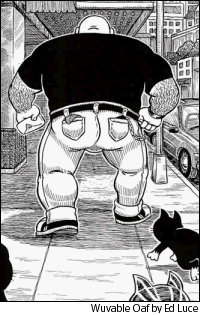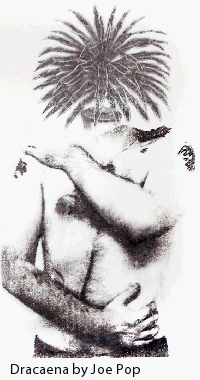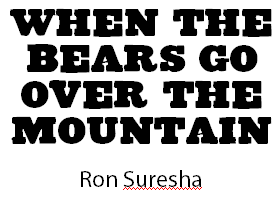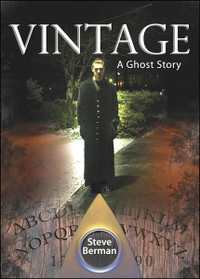LETTERS TO THE EDITORS
A Glimpse of a Gay Brother
I just finished reading Ms. Schneider’s remembrance and celebration of her dear friend David in Issue #73 of White Crane.
I never knew of either of these people until now and yet here I am with tears in my eyes at the pleasure of the description of his life and also the loss of such a life-loving man and the passing of such a beautiful friendship of which his and K.G.’s would be one of many, though I’m sure a very treasured one. Her writing is beautiful, glowing and emotive and I’d really like to thank her for giving me a glimpse into her world and that of her ‘Gay brother’ David.
Bless you both.
STEPHEN WATSON
Brighton, United Kingdom
The Importance of Health
I was very pleased to see in the Summer ‘07 White Crane that you are running a regular column on Health. I suspect we agree that the subject is critical for each of us as individuals and increasingly I think the subject will be critical for us as groups. Perhaps the best way we can become and stay healthy is to form a collective place and space both to evaluate what is good and to help us maintain the insight and discipline needed for good health.
My specific interest in this approach concerns Gay seniors and their retirement. A group of us in Austin, Texas have formed the Lambda Retirement Community, Inc. that is designed to help us deal productively with the many issues of growing old. We have discussed the potential of group health insurance; of the value of group knowledge and support to eat healthy, exercise and fight off the many temptations that lead to apathy and obesity; of learning and contributing to a green life; of creating a framework where the young and old can meet and grow; etc. Generally, of creating an environment where we can grow old as slowly as possible with grace and dignity and die when we want to.
I look forward to Jeff Huyett’s contribution in White Crane. Thanks to you, Jeff, specifically and to the editorial staff generally for this feature.
Hugs all,
DELAYNE HUDSPETH
Austin, Texas
www.lambdaretirementcommunity.org
Age Appropriate
I am wondering if this magazine is appropriate for a 16 year old.
Please let me know your thoughts,
KATHLEEN C.
Colorado Springs, Colorado
Bo Responds:
I suppose the short answer would be: it depends on the 16-year-old. White Crane is collected in major universities and public libraries across the United States and Europe. In 2004 we were an Utne Independent Press Nominee for spirituality coverage, in the same category with Commonweal and Sojourners. So if this 16-year-old might read Sojourners, for example, I’m sure he would find us of interest. My own now 21-year-old nephew and 17-year-old niece have read White Crane since they were about 15 and 12, respectively (and their mother, a family physician, puts it on the waiting room table in her medical practice in Wisconsin).
On the other hand, we’re not a pop culture magazine, so any sixteen year olds (or 46 year olds) looking for the latest dish on what’s-his-name from N’sync, or what the new hot “must-have” piece of fashion is likely to be disappointed. We’re not interested in Gay people as a marketing niche. For that reason, we don’t do advertising. Any displays you see in our pages are for people, goods and services that we believe to be in keeping with our educational mission. Each issue is themed. Past themes have been “Generation Conversation,” “Bohemia,” “Friends,” and “Lovers.” Upcoming themes include “Race & Identity,” “Bears & Body Image,” “Ancestors,” “Communities,” and “Sanctuary.”
We aren’t inclined to the objectification of the human body — male or female — but we are sex-positive. By that I mean we occasionally have a subject that might lead a writer (we are reader-written) to talk about his penis, his sexual life, etc. But we’re not publishing it for its prurient value. I wouldn’t say it is a predominant theme in every issue, but it does come up. We think it’s healthy to talk about sex, sexuality, connections with other people, and connections with ourselves, body and mind.
The latter two of those subjects (connections with other people, connections with ourselves) would also qualify (along with connections with the world) as our definition of “spirituality.” White Crane began as a newsletter among Gay men to discuss spirituality. We aimed not to be ‘prescriptive,’ but descriptive. We didn’t want to take “sides” and say this spiritual path or that spiritual path was better or worse. What we wanted was to trust our readers to describe what worked for them and what didn’t and encouraging them to take that which worked and leave the rest behind.
Finally, our mission (we are a 501c3 educational corporation…contributions are tax deductible to the fullest extent of the law) is to assert and demonstrate that same-sex people are a critical part of the evolution of life on Earth. We’re of the opinion, supported by a fairly vast amount of historical evidence (biblical misinterpretation and misappropriations notwithstanding) that same-sex oriented individuals have served a very real purpose in society, and that the denial of this deranges not only Gay people, but society as well.
We don’t “believe” in evolution…because Evolution is not a matter of belief. It’s science. You weigh evidence and accept it or not. We understand it not as theory, but as a proven fact. And part of that fact is this: nothing survives in Nature that doesn’t serve Nature and species survival. Ergo, there must be some evolutionary reason that same-sex people have existed across time and cultures and species. Plainly there must be some evolutionary, survival purpose. The joke we share is that if the ultimate “purpose” of heterosexuality is the continuation of the gene pool, then the purpose of homosexuality is to make sure it’s Olympic-sized, with lanes, and nice towels, a round-the-clock lifeguard is on duty and a nice poolside tiki bar.
More to the point, there are demonstrable social roles that have been played by same-sex people in cultures across history. Some of these archetypes include the mediator, the shaman, the clown, the contrary and the teacher. White Crane believes that the most valuable thing taken from a people is their history. History is always the story told by the “winner,” so we are frequently a people constantly coming out of erasure.
So much of our interest in the magazine and other publishing we do (we also publish books) is exactly what precipitated this exchange between you and me: i.e. how do we pass along a culture and wisdom to the next generation of Gay people when we are (largely) not a procreative community? Many of our recent issues have been devoted in some manner to what we call "the generation conversation." There are many facets to this, but clearly one of them is young men (and their parents) are afraid that mature Gay men are purely predatory (we’re not) and, frankly, mature Gay men are afraid of being taken advantage of, as well. So where do we create safe space for the conduct of intergenerational conversations? Mentoring? etc. We hope to be making a small space for that to happen in our pages.
In the wider picture, White Crane also sponsors cultural programming that is touring to LGBT Community Centers across the U.S. We sponsor the Gay Men’s Health Leadership academies and spiritual retreats in various places around the U.S., too. And we recently took on the sponsorship of a documentary film, Standing on the Bones of Our Elders. We also do a daily Gay Wisdom email list, which is usually a “This Day in Gay History” listing of people and events that happened on a particular day, along with accompanying essays and writings from the archives of the magazine (we’ve been publishing for 18 years).
I hope that begins to answer your question. Obviously there’s a lot to say — that’s why we publish a magazine! I feel a little like Francis P. Church, in The New York Sun: “Yes Virginia, there is a Gay culture." I respect that you would write and ask on behalf of what I assume is your son. Sadly, my guess is most 16-year-olds would find reading White Crane more like homework than recreational reading, unless they were unusual 16-year-olds. We do seek to challenge and inform readers. You don’t see many 16-year-olds evincing an interest in history, anthropology and poetry, to name a few of the areas in which we are interested. But if yours is, we’re the magazine for him!
Cordially,
BO YOUNG








